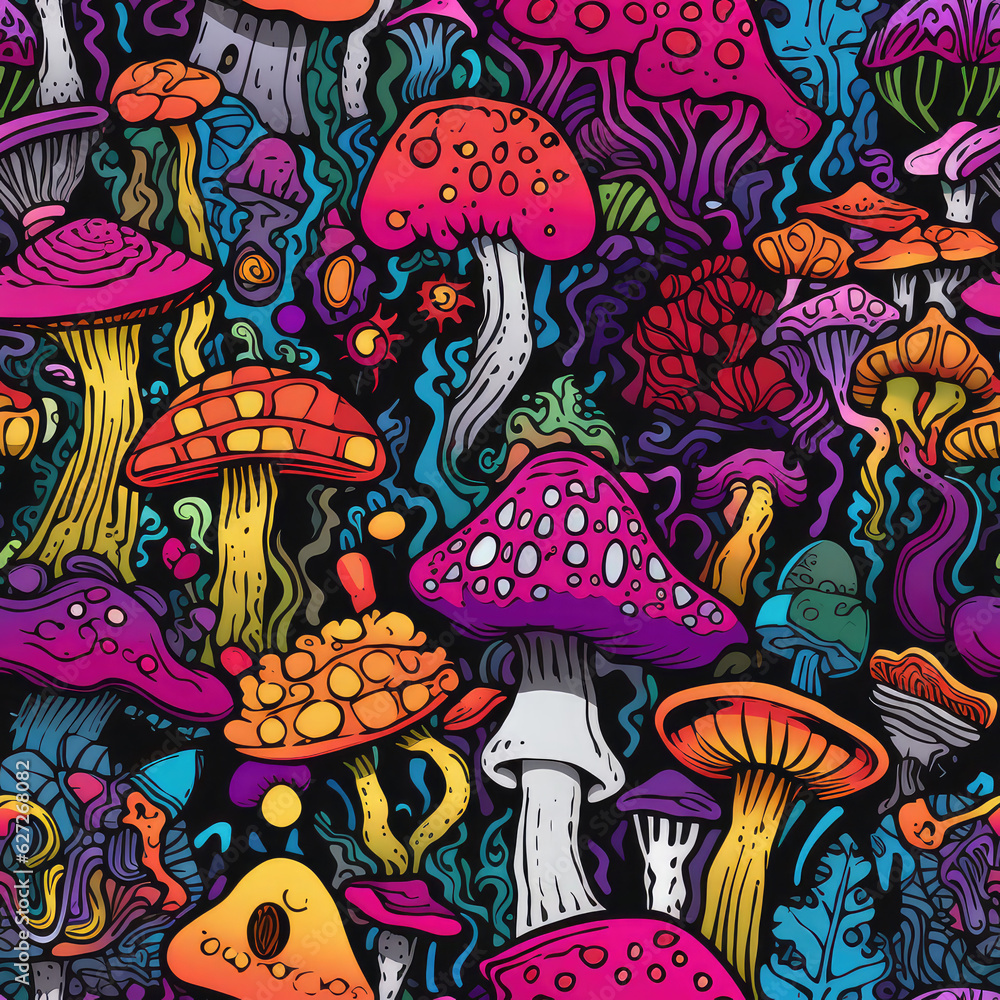All About Psychotomimetic Compounds: Their Function in Psychological Research
Psychotomimetic substances, such as LSD and psilocybin, have gathered boosting interest in mental research for their capability to duplicate psychotic symptoms and provide insight right into numerous mental wellness problems. Their interactions within the brain, specifically with serotonin and dopamine paths, recommend a complicated relationship in between consciousness and neurobiology that may open novel therapeutic avenues. As scientists continue to explore their prospective applications, honest factors to consider surrounding their use in medical setups become critical, raising crucial inquiries concerning safety and informed approval that call for further expedition.
Definition of Psychotomimetic Substances
In the realm of mental research study, psychotomimetic substances are compounds that can induce effects resembling those of psychosis, such as hallucinations, misconceptions, and modified perceptions of reality - About Golden Psycho. These compounds can be classified into different classifications, consisting of hallucinogens, dissociatives, and certain stimulants, each creating distinctive emotional effects
The pharmacological action of psychotomimetic compounds usually includes modulation of natural chemical systems, especially those associated to serotonin, dopamine, and glutamate. As an example, compounds like lysergic acid diethylamide (LSD) mainly act on serotonin receptors, resulting in extensive alterations in sensory understanding and cognition.
The utility of psychotomimetics in research study lies in their ability to resemble psychotic symptoms, supplying a model for recognizing the underlying systems of psychotic disorders such as schizophrenia. By researching the impacts of these compounds, scientists can acquire understandings right into the neurobiological and emotional processes that add to psychosis.
Additionally, psychotomimetic compounds have actually been discovered for their therapeutic possibility in treating numerous psychological health and wellness conditions, consisting of anxiety and stress and anxiety, highlighting their twin function in both research study and potential clinical applications.
Historic Development and Context
The exploration of psychotomimetic compounds has a rich historic context that dates back to ancient civilizations, where compounds such as psilocybin mushrooms and peyote were used in spiritual and recovery practices. These very early uses often linked with spiritual routines, recommending a profound respect for the modified states of awareness generated by these substances.
The mid-20th century marked a substantial switching factor in the research of psychotomimetic compounds, specifically with the synthesis of LSD by Albert Hofmann in 1938. The subsequent popularization of LSD in the 1960s catalyzed a wave of passion in both its mental impacts and potential therapeutic applications. Scientists started to investigate exactly how these compounds could mimic psychotic states, providing insights into mental ailment.
Nonetheless, the raising association of psychotomimetics with counterculture movements led to regulatory reaction, finishing in the criminalization of several of these compounds. In spite of these obstacles, the revival of passion in the restorative capacity of psychedelics in the 21st century has prompted renewed research study. This historical trajectory emphasizes the evolving perception of psychotomimetic compounds, transforming from spiritual substances to subjects of clinical questions and, possibly, healing guarantee.
Mechanisms of Activity
Recognizing the mechanisms of activity of psychotomimetic compounds reveals the detailed means these materials engage with the mind's neurochemistry. These compounds mostly exert their impacts through modulation of neurotransmitter systems, specifically serotonin, dopamine, and glutamate. Many traditional psychedelics, such as psilocybin and LSD, mainly act as agonists at serotonin 5-HT2A receptors, leading to altered understanding and cognition. This interaction not just affects sensory processing however likewise boosts my review here emotional and reflective experiences.
Along with serotonin, dopaminergic pathways are substantially affected by substances like mescaline and certain cannabinoids, which can lead to altered states of consciousness and modifications in state of mind and motivation. Additionally, the NMDA receptor incongruity observed with materials like ketamine highlights one more path whereby psychotomimetics may induce dissociative states and profound changes in assumed processes.
The neurochemical waterfalls initiated by these interactions lead to complex and complex mental results. Comprehending these systems is critical for both the advancement of psychological research study and the therapeutic potential of psychotomimetic substances, as they offer understandings into the underlying neural correlates of altered states of awareness.
Current Research Study and Applications
Recent investigations into psychotomimetic compounds have revealed a revival of rate of interest in their restorative applications, especially in the areas of psychiatry and psychology. Scientists have started exploring substances such as psilocybin, LSD, and ayahuasca for their prospective to relieve symptoms connected with different mental health disorders, including anxiety, anxiety, and PTSD.
Clinical tests have actually demonstrated that, when provided in controlled atmospheres, these compounds can assist in extensive emotional experiences, advertising psychological developments and improved healing end results. Researches have actually revealed that psilocybin-assisted treatment can lead to significant decreases in treatment-resistant anxiety, with results lasting for numerous months post-treatment.
Moreover, psychotomimetic compounds are being assessed for their capability to foster neuroplasticity, possibly allowing for even more effective rewiring of maladaptive idea patterns. These searchings for recommend that such compounds might function as accessories to traditional psychotherapeutic approaches, boosting the efficiency of healing interventions.
As research study progresses, the emphasis is shifting in the direction of understanding the optimal dosages, healing setups, and participant attributes that can maximize the benefits of these compounds. This burgeoning field holds promise for changing over here psychological wellness treatment paradigms and resolving the constraints of traditional psychological medicines.
Honest Factors To Consider in Research Study

Navigating the honest landscape of research involving psychotomimetic compounds is vital to making certain individual security and the stability of research outcomes. Scientists need to prioritize enlightened approval, guaranteeing that individuals completely understand the prospective threats and benefits related to the compounds being examined. This includes supplying detailed information regarding possible psychological results, consisting of intense and long-lasting effects, and allowing participants the opportunity to withdraw from the research at any kind of time without penalty.
Additionally, ethical oversight by institutional testimonial boards (IRBs) is vital. IRBs evaluate study procedures to protect participant well-being and maintain moral standards. This analysis assists alleviate dangers and guarantees that studies are conducted with scientific roughness. In addition, the possibility for coercion must be very carefully analyzed, especially when at risk populations are involved.
Discretion is another vital factor to consider. Researchers must implement robust measures to secure participants' identities and information, specifically given the delicate nature of experiences connected with psychotomimetic substances (About Golden Psycho). Inevitably, a dedication to moral practices not just promotes count on between scientists and participants however likewise improves the trustworthiness and credibility of the research study results, contributing to the development of mental expertise

Conclusion
To conclude, psychotomimetic compounds, especially traditional psychedelics such as LSD and psilocybin, deal considerable understandings this content into emotional conditions via their distinct devices of action. Their therapeutic possibility in dealing with conditions like anxiety and PTSD highlights the significance of continued research in this field. Ensuring moral standards in research study methods is crucial for individual safety and security and notified permission, permitting for a responsible exploration of these compounds' advantages and ramifications within mental science.
Comments on “Find Out What People Are Saying About Golden Psycho and Their Experiences.”